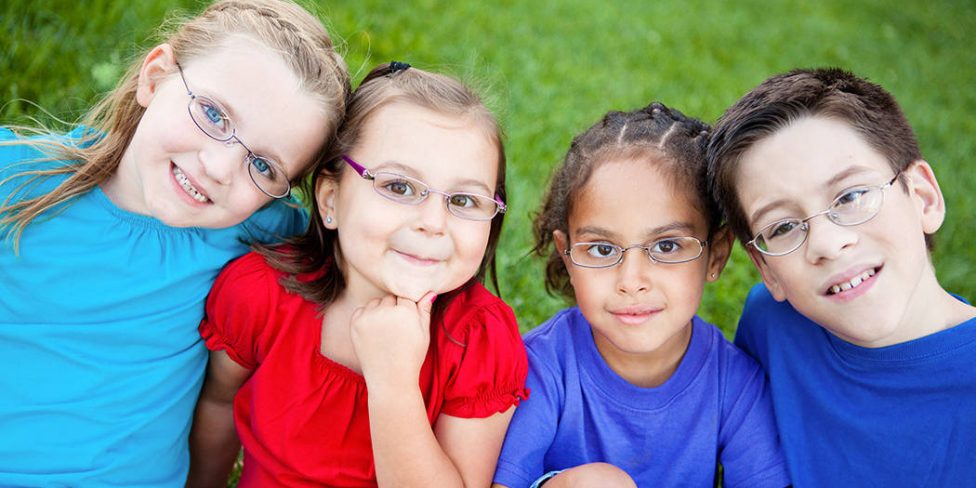Have you noticed that more and more kids are wearing glasses these days? At the playground, in school, at the park, kids are in spectacles much more frequently than ever. The main driver of this is the increased rates of myopia in children. Myopia is when a child can no longer see things in the distance well (like the smart board at school or the time on a clock across the room) and must wear glasses in order to see properly. This is because the eye, which focuses light onto the back of the eye to allow us to see, grows too long so that the light no longer is focused to the correct spot. As the child grows, there is a risk that myopia will continue to worsen through early adulthood.
Changes in behavior have greatly contributed to the lengthening of the eyeball. Kids these days spend more time indoors and less time outside. Studies have found that exposure to full spectrum, natural light (like the light outdoors) promotes development of good vision and prevents myopia. On the flip side, being indoors more is associated with earlier development of myopia and faster progression of myopia once it occurs.
Aside from the annoyance of needing glasses or contact lenses to see well, myopia also has additional risks, including increased risk of retinal tear or detachment, cataract, glaucoma, abnormal blood vessels in the back of the eye, and other conditions that can lead to permanent visual impairment or blindness. For so many reasons, more myopia is not a good thing!
Rates of myopia have increased worldwide, and some kids are requiring glasses even when no one else in their family needs them. Fortunately, we are developing ways to slow progression. As mentioned earlier, spending time outdoors is a great way to prevent myopia from becoming a problem and can slow the progression once it has occurred. In addition, there are two types of contact lenses and one eye drop that can prevent progression. If myopia continues to progress even with treatment, there is the possibility of using a different concentration of the eye drop or using a contact lens with an eye drop to further slow progression. Each of these treatments have risks and benefits, so it is important that you talk to your eye doctor about the best option for you or your child.
Unfortunately, there is no way (yet!) to reverse myopia once it occurs, but the above methods have at least successfully slowed the growth of the eyeball during the growing years for many children and teenagers. Once a child reaches adulthood, progression of myopia naturally stops in most people. Therefore, supporting kids and addressing this issue while they are young and growing is important since this is the time when an intervention can be most successful. If you or your child have been diagnosed with myopia or believe you may have it, make an appointment with your eye doctor to discuss your options further. At Children’s NoCo, we are dedicated to helping your child have the best vision possible. Dr. Carolyn Graeber is a board-certified ophthalmologist who specializes in diagnosing, managing, and treating eye conditions that affect your child. Make an appointment with her today!


